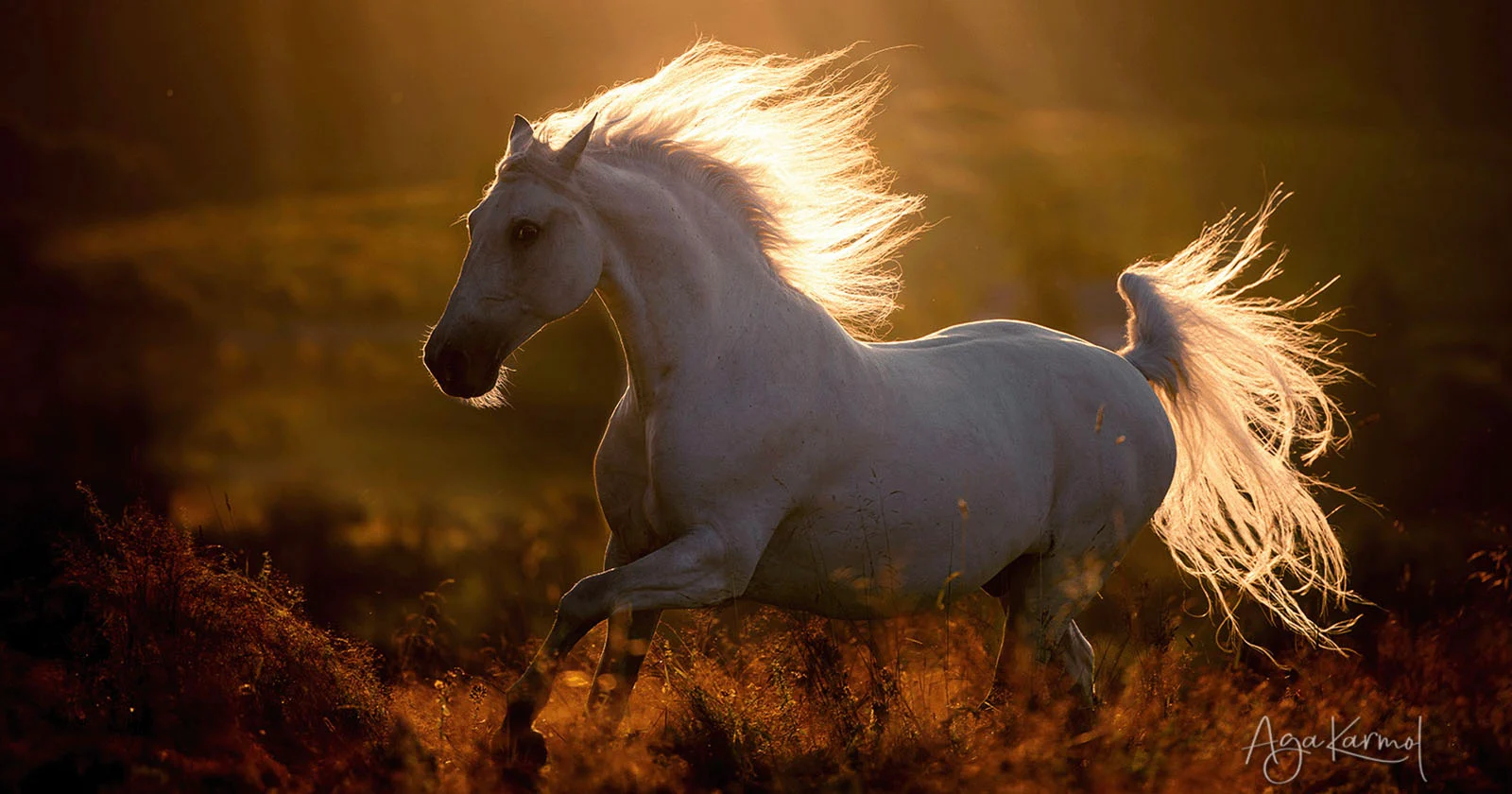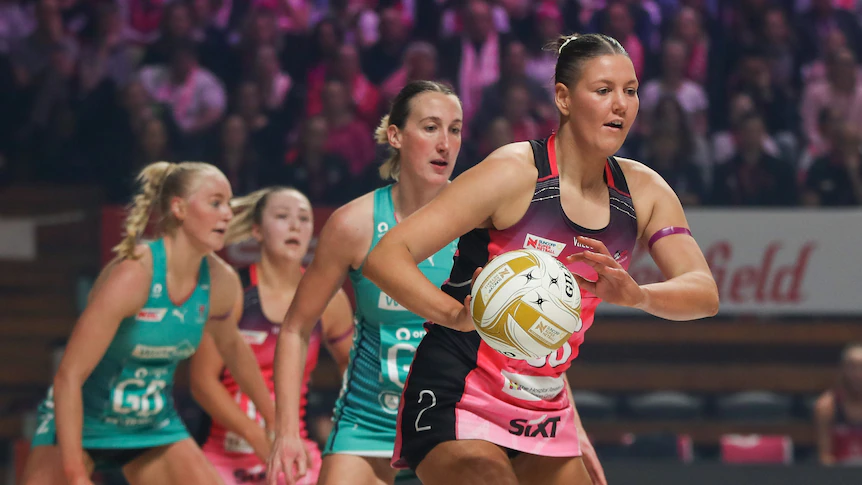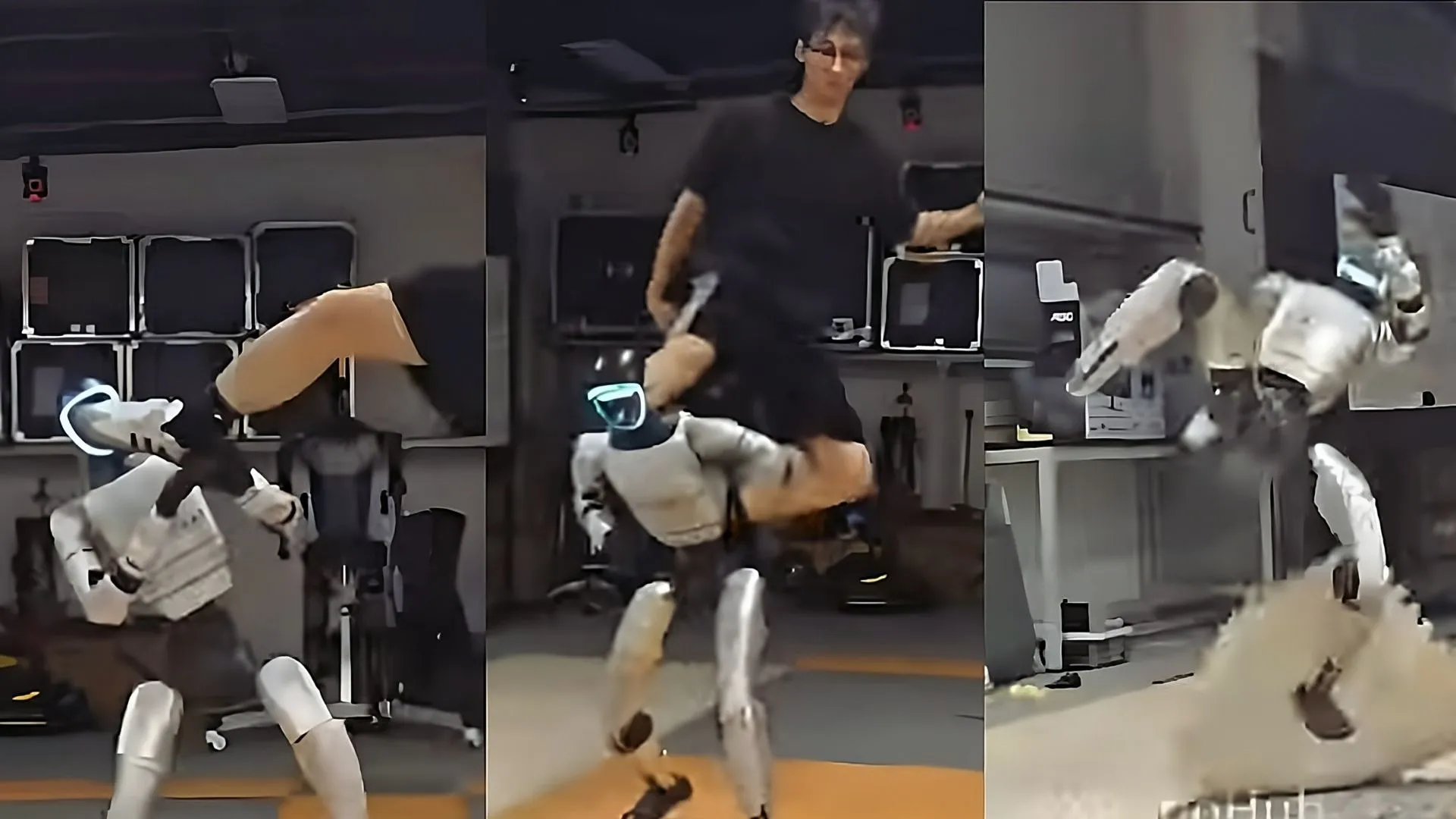
We spoke with Aga Karmol, a UK-based fine art equine photographer, to explore how she combines classical fine art techniques with her love of horses to create her striking signature images.
Equestrian and award-winning photographer Aga Karmol has built a career that spans fine art, travel, and equine photography, earning recognition for her distinctive approach to capturing horses. Her work blends technical precision, patience, and artistic vision, resulting in images that convey both the physical beauty and the spirited personality of her subjects.
Over the years, Karmol has received multiple accolades for her photography, including awards from international competitions and recognition in prominent equestrian publications. She has exhibited her work in galleries and online, showcasing her mastery of composition, lighting, and color, all informed by her background in classical painting, a style which she has effortlessly translated into her photography. Her career reflects a commitment to storytelling, capturing the elegance and power of horses while elevating equine photography to the level of fine art.
From Trail Rides to Professional Photography
People often ask how Karmol got into photography, and the answer is a mix of chance and passion.
“For years, I spent as much time as possible on long trail rides across the world. Mongolia, Patagonia, Morocco—you name it—I was there, in the saddle, usually covered in dust, and usually armed with a camera. I didn’t set out to be a professional photographer; it really happened by accident as I kept documenting my travels and experiences with horses. Those images gradually became the stories I wanted to tell,” she explains.
Those adventures led to writing travel pieces accompanied by her photographs. When National Geographic Traveller published her article on Mongolia, it opened the door to a correspondent role with Koń Polski, Poland’s leading equestrian magazine at the time. Initially, her work focused on storytelling with words and images, but over time, the photographs themselves became central to her work.
The pandemic offered an unexpected opportunity to focus entirely on equine photography. Travel was halted, but Karmol still had her horse and time to dedicate to her craft. What began as a personal outlet during lockdown quickly became her main professional focus, allowing her to refine her style and build a body of work that combines technical skill with artistic expression.
My Style: Old Masters Meet Feisty Stallions
With a master’s degree in classical painting from the Academy of Fine Art in Gdańsk, Karmol draws heavily on the techniques of the Old Masters. Her background in painting informs every aspect of her photographic approach, from composition to color and tone.
“I love dramatic light, strong compositions, and painterly tones. My background in classical painting really informs how I see the world through the camera. I’m constantly thinking about how light falls, how shadows interact, and how color and texture convey emotion in a single frame,” she says.
Her goal is to capture not only the beauty of the horse, but also its spirit. Horses are her ultimate symbols of grace and power, and she strives to reflect that in every image. By carefully balancing light, tone, and composition, her photographs achieve a timeless, painterly feel while remaining true to photography.
“Think of it as Rembrandt, but with a Canon instead of a paintbrush. The horses themselves are my models, and I try to capture not just their appearance, but the energy and spirit they carry into the scene,” she notes.
Through her style, Karmol bridges classical art and modern photography, producing work that is as emotive as it is visually striking. Her images are carefully orchestrated yet feel natural, offering viewers a sense of the horse’s personality and movement.
Working with Horses
Capturing equine subjects is never straightforward, and it requires patience, observation, and a deep understanding of horse behavior.
“People sometimes imagine I can just ask a horse to turn a little more to the left and hold that pose. Yeah, no. Horses are prey animals—they don’t follow scripts, and that unpredictability is both the challenge and the beauty of working with them. My role is to guide and observe, to anticipate moments that will translate into compelling images while keeping the horse calm and safe,” Karmol explains.
Her workflow blends careful planning with flexibility. She selects locations, sets up lighting, and prepares the environment, but once the horse is present, she lets it move naturally. Often, these unplanned moments result in more expressive and authentic images than originally envisioned. Safety is always a top priority, particularly when working with stallions. Thin safety halters, electric fences, and gradual introduction to studio equipment are all part of her mobile studio approach.
Shooting requires capturing hundreds of frames to ensure that fleeting gestures, subtle tilts of the head, or the perfect curve of a neck are recorded. Horses are constantly moving, and the best moments often last just fractions of a second. For Karmol, staying alert and open to these spontaneous moments is as important as any technical skill.
Editing: Where the Magic Happens
Post-processing is a crucial part of Karmol’s workflow, particularly for her fine art images.
“In equine portraiture, editing is essential. We often have to use smaller paddocks or thin safety halters for practical reasons, and those things need to be adjusted or removed in post. Beyond that, my fine art training guides every choice I make in color grading, composition, and atmosphere. Editing isn’t about changing the horse—it’s about refining the environment and enhancing the mood, bringing the vision I had in my mind to life while respecting the animal and the setting,” she explains.
Her decades of professional experience in Photoshop allow her to make intuitive adjustments that refine backgrounds, enhance lighting, and produce painterly effects. For documentary work, Karmol keeps editing minimal, relying on basic Lightroom adjustments to maintain authenticity. This ensures that every final image is both technically excellent and emotionally resonant.
Favorite Subjects
Karmol has a deep appreciation for all horses, but if she could choose one type to photograph forever, it would be Iberian horses from Spain and Portugal.
“They are the definition of equine beauty: powerful necks, elegant curves, expressive movement, and endlessly fascinating character. Iberian horses, in particular, have this innate elegance and willingness to connect with humans that makes them incredibly rewarding to photograph. I feel fortunate every time I get to work with them,” she says.
Their combination of grace, strength, and responsiveness makes them ideal subjects for fine art photography, allowing Karmol to capture both dynamic motion and intimate personality.
Gear That Makes It Possible
While Aga Karmol emphasizes that the photographer is more important than the camera, having reliable and capable equipment is critical for capturing fleeting moments and the fine details that bring her equine subjects to life. In equine photography, where movement is unpredictable and conditions can change rapidly, the right gear allows her to stay confident and focused on composition and timing rather than technical limitations.
“One of my best images was taken years ago on a humble Canon Rebel with a kit lens. It proves that creativity and timing matter more than gear, but reliable equipment becomes essential when capturing horses in motion,” she recalls.
Currently, her primary setup consists of a Canon R5 Mark II paired with a 70–200mm f/2.8 lens, which covers roughly 80 percent of her work. This combination provides the flexibility to photograph horses both at a distance and up close, with the fast shutter speeds, dependable autofocus, and high-resolution sensor required to freeze dynamic movements.
She also supplements her main kit with wider lenses for environmental portraits and occasional prime lenses when she wants maximum image sharpness or a shallower depth of field. Lighting modifiers, portable strobes, and reflectors are used judiciously to enhance natural light without startling the horses.
“For me, gear is a tool to support my vision. It needs to be dependable, but it’s not what creates the photograph—the creativity, patience, and understanding of the animal are what make the image work,” she explains.
By combining technical reliability with artistic insight, Karmol ensures that each moment she captures reflects both the horse’s energy and her own photographic intent.
Challenges and Rewards
Equine photography presents unique challenges, from weather and lighting to managing animals and their handlers. Despite this, Karmol finds the work deeply rewarding.
“When a photo shows not just the horse’s beauty, but their personality, that’s when I know I’ve done my job. It’s not just about capturing a pretty picture. I want viewers to feel the horse’s energy, to sense the movement and emotion, and to be transported into that moment,” she says.
The ability to capture movement, emotion, and character in a single frame is what motivates her. Each session challenges her to adapt, anticipate, and respond in real time, which makes the resulting images all the more rewarding.
What’s Next
Looking ahead, Karmol is working on two major projects. One is a fine art book that collects her equine portraits, showcasing the horses she admires most. The other is a documentary project highlighting the often-overlooked professionals who make the equestrian world function: grooms, farriers, veterinarians, and saddle makers.
“They’re often overlooked, but without them, the equestrian world wouldn’t function. That book is going to be a tribute to them,” Karmol says.
In the meantime, she continues her day-to-day work of spending time with horses, capturing fleeting moments, and refining her images in post-production.
“Because at the end of the day, that’s what it is: art built on patience, trust, and a deep love for the horse. Every shoot, every edit, every frame is part of a process that combines discipline, observation, and creativity. I’m constantly learning, constantly seeking to capture the fleeting moments that reveal the soul of the animal in front of me,” she reflects.
For Aga Karmol, photography is more than capturing beautiful images, it is a way to honor the spirit, strength, and grace of the horses she works with. Each session demands patience, empathy, and an eye for fleeting moments, but the rewards are profound: photographs that tell stories, evoke emotion, and connect viewers to the power and elegance of these magnificent animals. By blending traditional artistry with contemporary methods, Karmol transforms fleeting equine moments into timeless works of art, inspiring fellow photographers and admirers alike to see the world, and its equine inhabitants, with greater attention, wonder, and respect.



